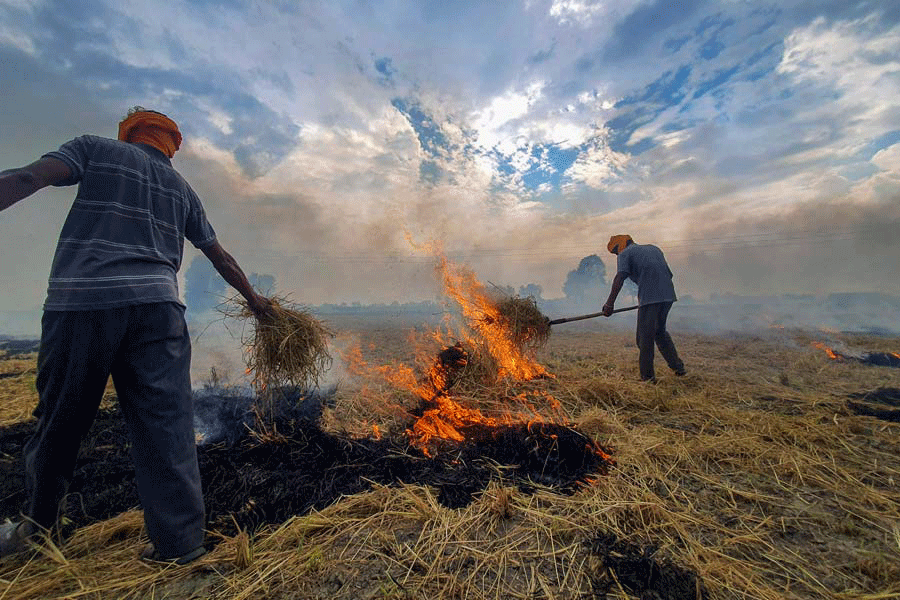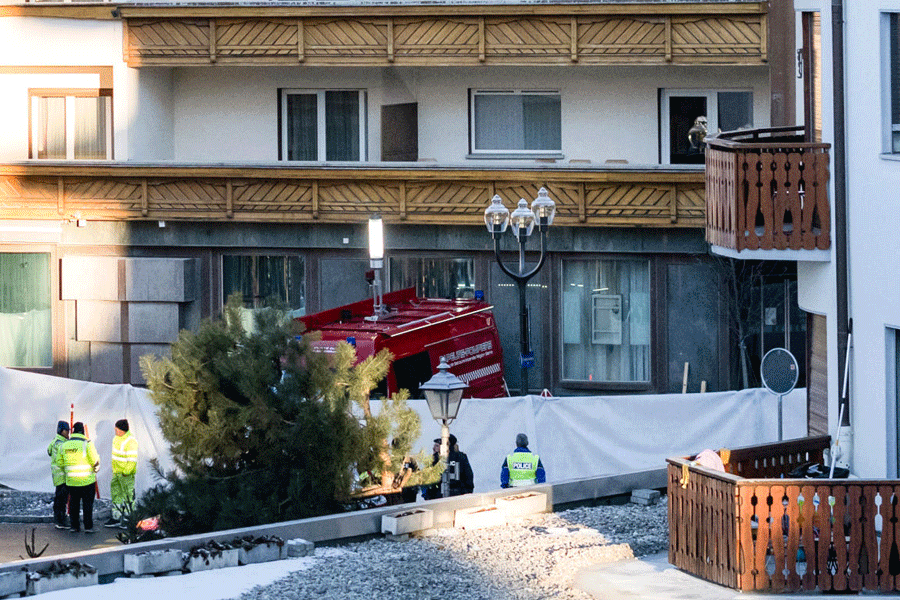India’s greenhouse gas emissions from crop residue burning increased 75 per cent over the past decade with Madhya Pradesh accounting for the second-largest area under farm fires after Punjab, a satellite-based study has shown.
While crop residue or stubble fires in Punjab and Haryana play a major role in early-winter episodes of air pollution over the National Capital Region, the study has revealed an exponential rise in the farm area burned in Madhya Pradesh and other states outside the Indo-Gangetic plains.
The study by researchers at the Indian Institute of Science Education and Research (IISER), Bhopal, has generated the first near-nationwide, district-level estimates for agricultural area burned and emissions from the fires.
The findings underline concerns that crop residue burning remains widespread despite a national crop residue management programme launched by the Union agricultural ministry in 2014. The stubble fires produce tiny soot particles that add to air pollution as well as long-lasting greenhouse gases.
Central government officials had earlier this week released data showing that there have been 13 times more stubble fires in AAP-led Punjab than in BJP-coalition-led Haryana since September this year.
“Unfavourable weather conditions contribute to stubble burning emissions from Punjab and Haryana being dumped over the NCR,” said Dhanyalekshmi Pillai, an assistant professor with the earth and environmental sciences department at the IISER, who led the study.
“But stubble burning is widespread. The emissions from other states don’t affect the NCR because of wind patterns, but those emissions too need to be addressed with urgency,” she told The Telegraph.
The study covered 602 districts in all the states except the Northeast. It found that the total agricultural area burned in the country had increased from 3 million hectares in 2011 to 4.5 million hectares in 2020. Pillai and her colleagues have published their study in the journal Science of the Total Environment.
This area had grown by 21 per cent in the states along the Indo-Gangetic plains, including Punjab and Haryana. But, in other states, the area had decreased by 37 per cent from 2011 to 2015, and then increased by an exponential 245 per cent.
Under this growth, India’s emissions of Earth-warming greenhouse gases from stubble burning increased from about 19,340 billion grams per year in 2011 to over 33,800 billion grams per year, the study has estimated.
Punjab accounted for 41 per cent of the country’s total agricultural area burned
followed by Madhya Pradesh, which accounted for 30 per cent.
In 2020, too, Madhya Pradesh was the second-largest emitter of greenhouse gases from crop residue burning (9,600 billion grams) after Punjab’s 15,000 billion grams.
The IISER study also found that the contributions of stubble burning from Madhya Pradesh and Rajasthan had grown exponentially after 2015 — a 460 per cent increase in Madhya Pradesh and 700 per cent in Rajasthan. While Punjab alone was responsible for 73 per cent of the stubble burned in 2011, its contribution increased slightly to 77 per cent in 2020.
Pillai and her colleagues say their interactions with farmers in Madhya Pradesh — although anecdotal — suggest that many farmers in the state remain largely unaware of policies that discourage crop residue burning and of alternative options to remove crop residue.











